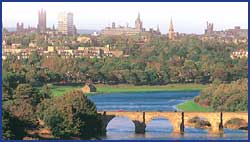 Berlin offers a model for how cities can cope with increasingly regular extreme floods
Berlin offers a model for how cities can cope with increasingly regular extreme floods
One neighbourhood in Berlin is trying to ensure that cities can become better-adapted to the increasing likelihood of extraordinary wet weather events.
The theory rests on the logical foundation that cities are inherently unnatural. By smothering the earth in concrete and tarmac and loading it up with vast structures of brick, steel, and glass, cities interfere with the way nature regulates itself.
The concentration of buildings, people, and activity increases temperatures – while tarmac and concrete surfaces naturally absorb, retain, and emit heat, only pushing the mercury higher.
On the aquatic side of the equation, unnatural, man-built road and pavement surfaces stop any falling water absorbing into the ground and then naturally providing moisture for soil and vegetation during dryer periods, while also evaporating to provide a kind of natural air conditioning.
The area of Rummelsburg in the city’s east, was built 20 years ago and serves as an exemplary model of the ‘Sponge City’ concept – ‘Stadtschwamm’ in German.
| Contact information | n/a |
|---|---|
| News type | Inbrief |
| File link |
http://www.citymetric.com/fabric/berlin-offers-model-how-cities-can-cope-increasingly-regular-extreme-floods-3355 |
| Source of information | citymetric |
| Subject(s) | INFRASTRUCTURES |
| Geographical coverage | n/a |
| News date | 30/10/2017 |
| Working language(s) | ENGLISH |
 you are not logged in
you are not logged in





